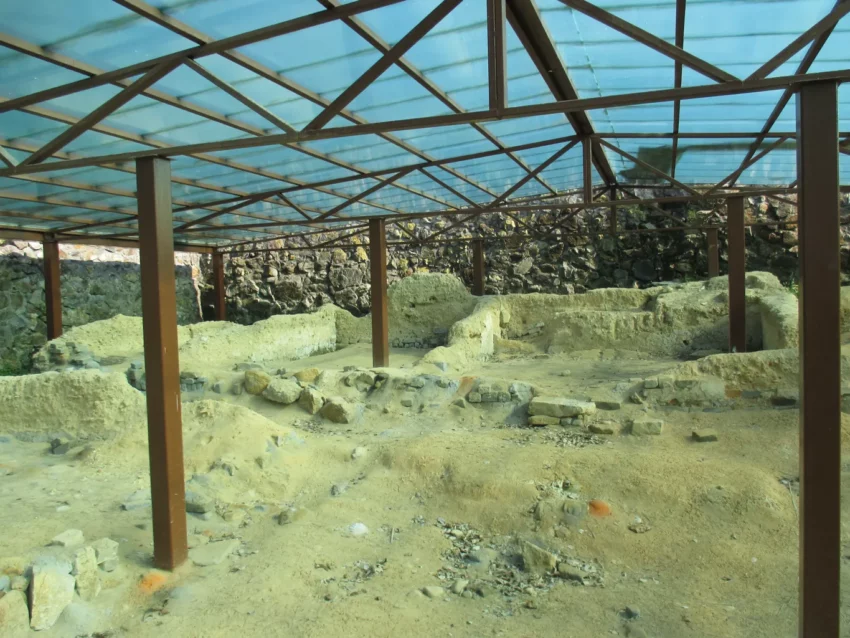Get your dose of History via Email
The Historical Context of Tung Lung Fort
The Tung Lung Fort, situated on Tung Lung Island near the tip of the Clear Water Bay Peninsula in Hong Kong, stands as an enduring mark of the region’s military history. Constructed in 1719 AD during the reign of the Kangxi Emperor of the Qing Dynasty, this fort is believed to have been erected as a defense against the threat of pirates prevalent along the South China coast. Historical accounts attribute the construction to Cheung Po Tsai, a notorious pirate turned navy colonel, but this connection is not firmly established and remains a topic of debate among historians.
Architectural Features of Tung Lung Fort
Tung Lung Fort is characterized by the traditional East Asian military architecture of its time. The primary material utilized in the construction is stone, reflecting the common practice in fortification building during the Qing Dynasty. Rectangular in shape and encompassing an area of about 70 by 80 meters, the fort’s remaining walls suggest a formidable presence, with the northeastern segment reaching a height of up to 2.8 meters in some areas.
Remarkably, the fort was originally armed with eight cannons, “five of which were made in Portugal,” according to the surviving historical records. Such multicultural armament signifies Tung Lung Fort’s role in a broader network of maritime security that incorporated Western armaments. Also of note are the barrack rooms, which could have accommodated auxiliary military functions, although the exact nature of these functions is not well-documented.
Decline and Restoration
Despite Tung Lung Fort’s strategic location and sturdy construction, it was short-lived. By 1810 AD, reports suggest that the fort was deserted, a mere 91 years after its establishment. The reasons for this abandonment are not clear, but could have been due to changes in naval military tactics, the decline of the pirate threat, or shifts in political priorities of the Qing rulers.
Fortunately, the value of Tung Lung Fort was not lost to time. The Hong Kong Government recognized its cultural and historical significance and took action to preserve it. In 1979, the fort was officially declared a monument. Subsequent efforts have been directed towards restoration and archaeological investigations to maintain the site’s structural integrity and to better understand its historical context.
Tung Lung Fort Today
In modern times, Tung Lung Fort is accessible to visitors who can reach Tung Lung Island via ferry. The site is popular among locals and tourists for its panoramic views and as a spot for outdoor activities like rock climbing, but it is the fort’s historical allure that continues to captivate those interested in Hong Kong’s past. With its walls still standing, albeit partially restored, the fort provides a tangible connection to the 18th-century Qing Dynasty and the region’s maritime history.
Although not a grandiose landmark in size or condition, Tung Lung Fort remains a prominent symbol of the regional heritage, reflecting the strategic importance of the South China Sea throughout the centuries. It serves as a sobering reminder of the transient nature of military power and the permanence of the cultural narratives that such sites embody. For historians, archaeologists, and visitors alike, Tung Lung Fort offers a unique vantage point from which to immerse oneself in the vigorous ebb and flow of Hong Kong’s multifaceted history.
Conclusion
The study of Tung Lung Fort provides invaluable insights into the Qing Dynasty’s defensive strategies, architectural standards, and the broader socioeconomic context of the South China coast. The fort’s architectural remnants, historical accounts, and its subsequent preservation efforts by the Hong Kong Government converge to illustrate a dynamic period in the region’s past. Despite its relatively brief operational period and the mysteries surrounding its rapid desertion, Tung Lung Fort endures as a poignant historical monument and an attraction for those drawn to the exploration of Hong Kong’s rich heritage.

